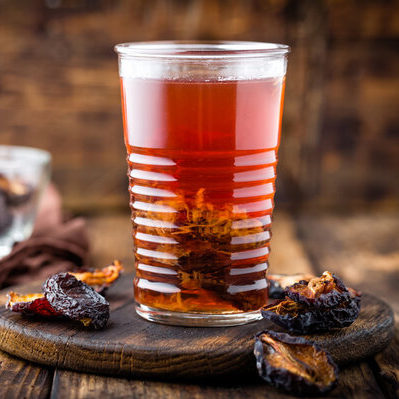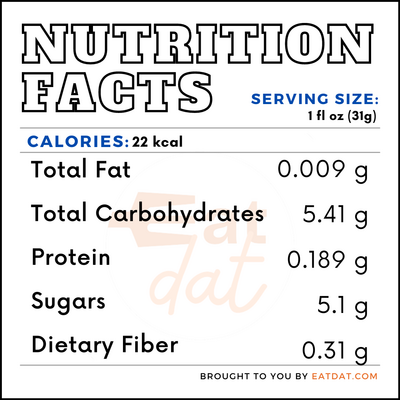
Prune Juice
What is Prune Juice?
Prune juice is a beverage made from prunes (dried plums) that have been rehydrated, although it is different from plum juice. The drink has a dark maroon color and a taste that is similar to red wine. Some even believe it has a medicinal taste.
- It is used as a dietary supplement and as a laxative for constipation.
- Also, this juice is used in cocktails and in desserts to impart its unique flavor.
Some of the most popular brands on the market are:
- RW Knudsen
- 365 Everyday Value
- Lakewood
- Plum Organics
Origin of prune juice
While plums have their roots in China around 470 BC, prunes most likely originated in France. In the 13th century, pilgrims brought plums back from the Middle East and planted them in Toulouse where there were tended to by monks. These monks collected the plums that had dried out and fallen from the tree, noting that they were still edible many months later. However, prune juice has American origins and was first produced in 1932 by Louis Pellier. He started importing prunes from France in the 1850s and founded a company called Sunsweet to sell the product.
Nutrition
Nutritional profile for 1 serving (31g):

In addition, this juice contains essential micronutrients such as calcium, magnesium, phosphorus, potassium, vitamin C, and lutein. It is also a laxative and is used to treat constipation. Additionally, it has antioxidant properties and may help in reducing the risk of diabetes, cancers, cardiological diseases, gastrointestinal diseases, and neurological diseases. Also, prune juice may help in regenerating bone mineral and treating menstrual disorders.
Commercial production
The main prune exporters in the world are Chile, the USA, Argentina, France, and Uzbekistan. Germany, Italy, Japan, Russia, and Mexico are the main importers. To make this juice, dried plums are rehydrated by being cooked in boiling water. Then, the juice is pressed out and clarified. The juice can be processed several times before it is pasteurized and bottled.
Prune juice ecipes
This juice can be used in different ways to give a sweet flavor to desserts and cocktails. Here are a few recipes:
- Prune Juice
- Prune Cake
- Poached Pears
- Prune Bundt Cake
- Barbecue Pork
- Slow Cooked Beef
- Chocolate, Walnut and Prune Fudge Torte
- Smooth Move Cocktail
- Pumpkin Prune Loaf
- Dark Christmas Cake
- Prune Toddy
- Sugar Plum Martini
- Pruneaux
FDA regulations
The FDA regulates all fruit juices, including this juice. Furthermore, the organization defines fruit juice as any beverage that contains any amount of juice derived from fruits. Canned prune juice is defined as the food prepared from a water extract of dried prunes. It may be packaged in bottles, cans, cartons, bag-in-box, and other packaging materials.
References
Todd Ingram, The Great Prune Juice Mystery, The Conscientious Omnivore, https://theconscientiousomnivore.wordpress.com/2013/09/25/prune-juice/
Broudy, A. “The power of the prune.” The Western journal of medicine vol. 172,1 (2000): 48. doi:10.1136/ewjm.172.1.48, https://www.ncbi.nlm.nih.gov/pmc/articles/PMC1070725/
Chiu, Hui-Fang et al. “Regulatory/modulatory effect of prune essence concentrate on intestinal function and blood lipids.” Pharmaceutical biology vol. 55,1 (2017): 974-979. doi:10.1080/13880209.2017.1285323, https://www.ncbi.nlm.nih.gov/pmc/articles/PMC6130511/
